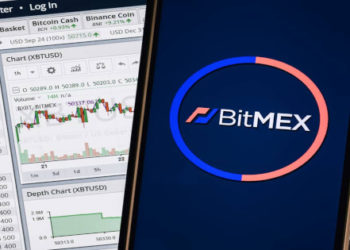According to official blog of Polygon Labs, Ethereum’s scaling problem isn’t a new conundrum, with its history being almost as ancient as Ethereum itself. What makes Ethereum uniquely robust is its steady evolution, ensuring the chain’s safety and decentralization. But the question arises, how does Polygon aim to augment Ethereum’s scalability?
Understanding Layer 1 (L1) and Layer 2 (L2)
L1 and L2 are often termed as the “parent” and “child” chain respectively. While the L1 operates independently, L2 has certain dependencies on L1, primarily for security and transaction data storage. The essence of all Ethereum L2s is to process and execute transactions, effectively making L2 an execution layer. However, the responsibility of reaching consensus—verifying transaction data and updating all blockchain accounts—falls to L1.
Ethereum’s careful progression towards consensus prioritizes security over speed. As a result, any perceived “slowness” in Ethereum is a consequence of its emphasis on safety.
Layer 2: A Solution to the Blockchain Trilemma
A classic engineering rule states: one can achieve either two of good, cheap, and fast simultaneously. In the blockchain context, the pivotal elements are decentralization, scalability, and security. Given the significance of security and decentralization, L2 emerges as the primary solution to address scalability concerns.
While many L2s were still in their development phase, several intermediate solutions existed, each with its unique approach to the trilemma.
Different Approaches to Scaling
State Channels: Existing off-chain, these utilize an on-chain smart contract to allow users to deposit assets. The catch? They function without L1 interaction and require a higher trust level due to their distinct transaction validation and dispute resolution logic.
Plasma Chains: Plasma chains submit periodic transaction summaries to the L1 in the form of block commitments, requiring lesser trust than state channels.
Rollups: The fundamental difference between sidechains (like state channels and plasma chains) and genuine L2s is their security assurance. While sidechains use consensus mechanisms, L2s employ cryptographic proofs. Among rollups, ZK rollups leverage validity proofs, and optimistic rollups utilize fraud proofs. Interestingly, ZK proofs can confirm the authenticity of a transaction batch without divulging specific details—a feature that boosts scalability without compromising on security or decentralization.
Polygon’s Role in Ethereum’s Scaling
Polygon 2.0 envisions to cater to diverse use-case requirements, ensuring the scalability of each. The present Polygon protocols encompass Polygon PoS, Polygon zkEVM, and Polygon CDK, with the forthcoming addition of Polygon Miden. Notably, these chains are designed to be interoperable, allowing swift cross-chain transactions without needing a direct bridge to Ethereum.
Polygon PoS: Launched in 2020, this network has overseen more than 2 billion transactions from over ten thousand dApps, at an average transaction fee of just $0.015. Polygon Labs has plans to transform Polygon PoS into a zkEVM validium, which would effectively convert it into a true L2.
Polygon zkEVM: A ZK rollup that mirrors the Ethereum Virtual Machine (EVM), ensuring a seamless experience for Ethereum developers. Since its inception on Mainnet, it has processed over 5 million transactions from 400,000 unique addresses.
Polygon Miden: Another ZK rollup, but with a focus on a ZK-centric design. This design extends the capabilities of EVM, facilitating the development of applications challenging to realize on account-based systems like Ethereum.
Polygon CDK: An open-source kit to develop ZK-powered L2s, ensuring scalability, security, and sovereignty.
In essence, the evolution of the Polygon ecosystem is steadily aiding in the realization of a more equitable future through the mass adoption of Web3. To keep abreast of Polygon’s progress, enthusiasts are encouraged to follow the Polygon Labs Blog and other associated communication channels.
Disclaimer & Copyright Notice: The content of this article is for informational purposes only and is not intended as financial advice. Always consult with a professional before making any financial decisions. This material is the exclusive property of Blockchain.News. Unauthorized use, duplication, or distribution without express permission is prohibited. Proper credit and direction to the original content are required for any permitted use.
Image source: Shutterstock
Credit: Source link












































